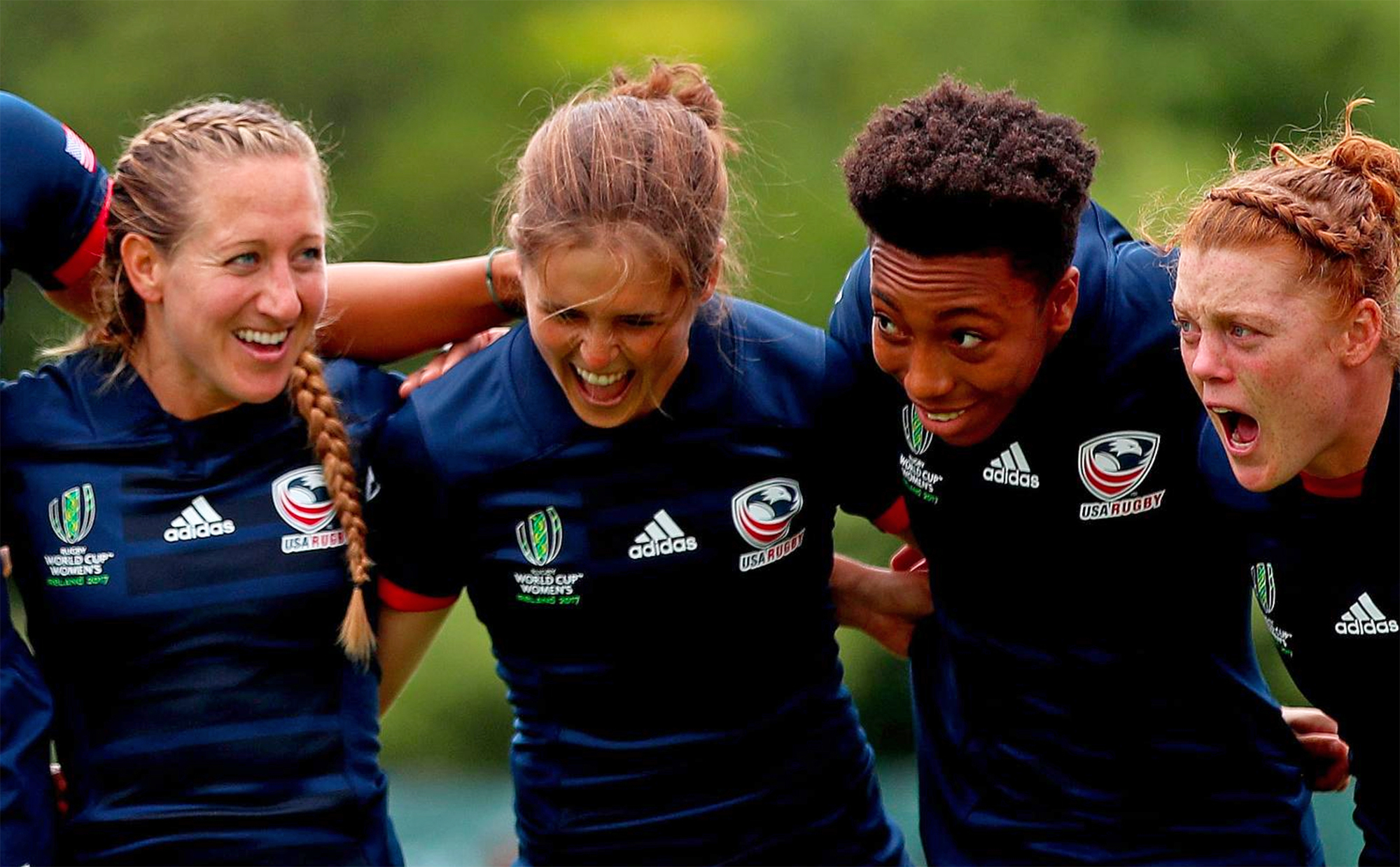
Photo: INPHO/James Crombie for World Rugby
The U.S. has already begun the 2017-18 season, and it feels surreal that the Women’s Rugby World Cup (WRWC) ended only 10 days ago. In Ireland, the USA Women’s National Team (WNT) finished fourth – its highest since 1998 – and Pete Steinberg coached his final test for the Eagles. In this three-part series, Steinberg took some time to reflect on his time as USA coach, the 2017 WRWC itself, and the changes that need to happen at home and abroad.
RELATED: Eagles Finish 4th at World Cup • New Zealand Wins 5th World Title • Irish Rugby Tours Buoys USA Abroad
“I’m definitely looking forward to a break, but I haven’t really accepted that it’s over,” said Steinberg, who was settling into a hotel with his wife, infant and dog while their Colorado home was being renovated. “I’m stepping away from the national team, and I don’t know if I’ll have a role with USA Rugby. That’s not a decision I get to make. But my involvement in rugby won’t disappear. I’m still an advocate for women’s rugby.”
He’d have to be after a quarter century serving the women’s game at the age grade, collegiate, all-star and national levels. While uninterested in reflecting on his own coaching achievements, he did note a nice bookend on his career: On the same day that Steinberg was coaching the USA in the WRWC semifinal against eventual champion New Zealand, the 1997 Penn State women’s rugby team was being honored back in the states. That team was Steinberg’s first DI national championship squad with Penn State, 20 years ago.
While Steinberg’s WNT career did not end with a championship title, it did finish with success. The WNT program worked its limited resources, ticked all the boxes that would earn the team a semifinal berth, and then had a go at the top teams in the world.
“I think what was probably most satisfying about the World Cup was the fact that we had a plan, starting back in January, and we kept to that plan and it worked out,” Steinberg said. “We took some gambles and made some commitments that we stuck to throughout the World Cup and it worked.”
Those gambles and commitments referred to player selections. The lack of international tests meant that the USA was going to have to learn and grow throughout the WRWC. So the coaching staff made selections earlier than normal and committed to a starting lineup, so those athletes could play together for as long as possible. Everyone – from the starters, to the reserves, to the first caps – grew tremendously in Ireland.
“We did a pretty good job of preparing the team in long camp, and there was tremendous growth throughout the tournament,” Steinberg said. “Stacey Bridges, who had 26 caps, had an amazing tournament – probably the best rugby I’ve seen her play, and she’s maybe our most experienced player. But we didn’t get to the semifinals because of the growth of one or two players; every player out of the 28 stepped up when they needed to and played the rugby we needed them to play.”
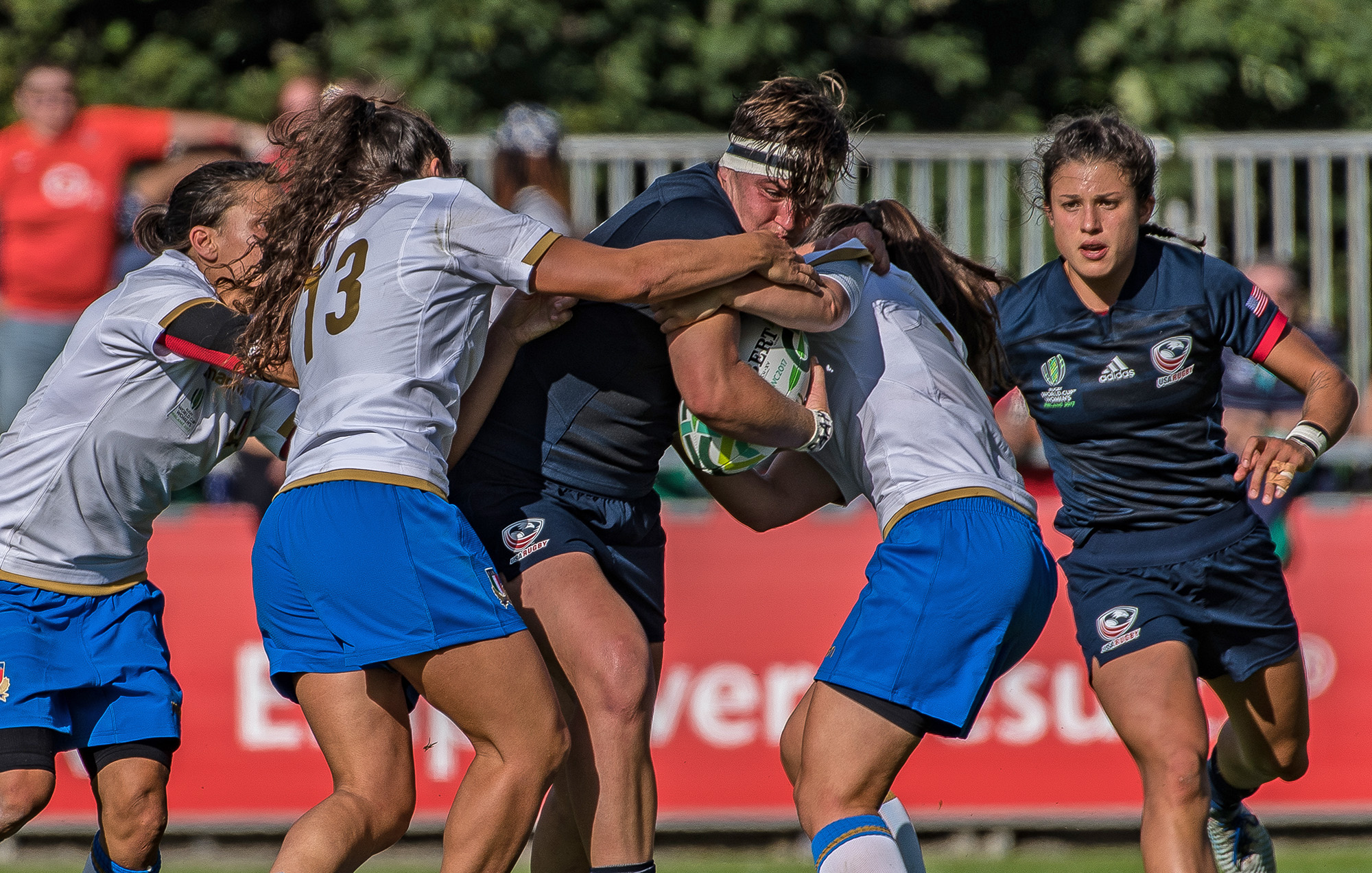
WRWC Dream Team selection Sara Parsons / Photo: Colleen McCloskey
Getting to the semifinals meant bonus-point wins against Italy and France, and then as best a showing as possible against England, ideally ending with a third bonus point.
“We thought going in that Italy was the weakest team in our pool. They didn’t play any warm-up games and didn’t have a strong Six Nations,” Steinberg said. “We knew what we had to do but we didn’t play that well in that game. … We won and scored four tries, but that was all we scored.”
But it was that particular team’s first outing together and it set the baseline for performance. Against Spain, the team played better and with better structure, and got the bonus-point win. Meanwhile, teams like Ireland and Canada – leading contenders for the “best second place” semifinal berth – hurt themselves by not maximizing their standings potential in the first two pool play rounds.
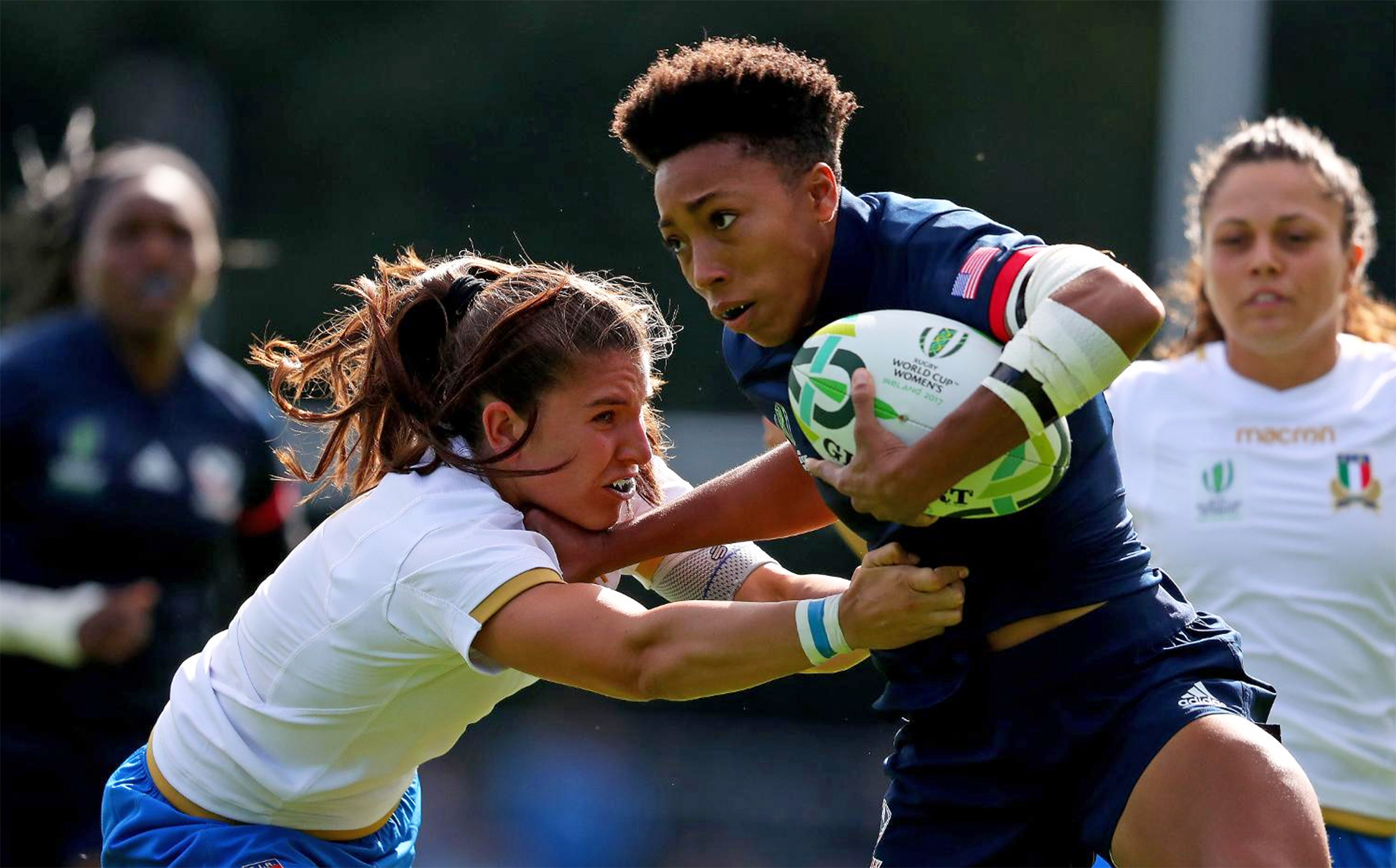
WRWC Dream Team selection Kristen Thomas / Photo: INPHO/Bryan Keane for World Rugby
“We knew coming into England that we were probably underdone,” Steinberg considered the team’s prep in facing the then-reigning world champion in round three. “We knew we were going to have a tough time that game. What we talked about was in order to win the World Cup, we were probably going to play England twice, and we knew that after we played them the first time that we’d be better to play them again.”
Steinberg was blunt about the physicality and strength that England would bring, but reiterated that the focus was always on scoring four tries.
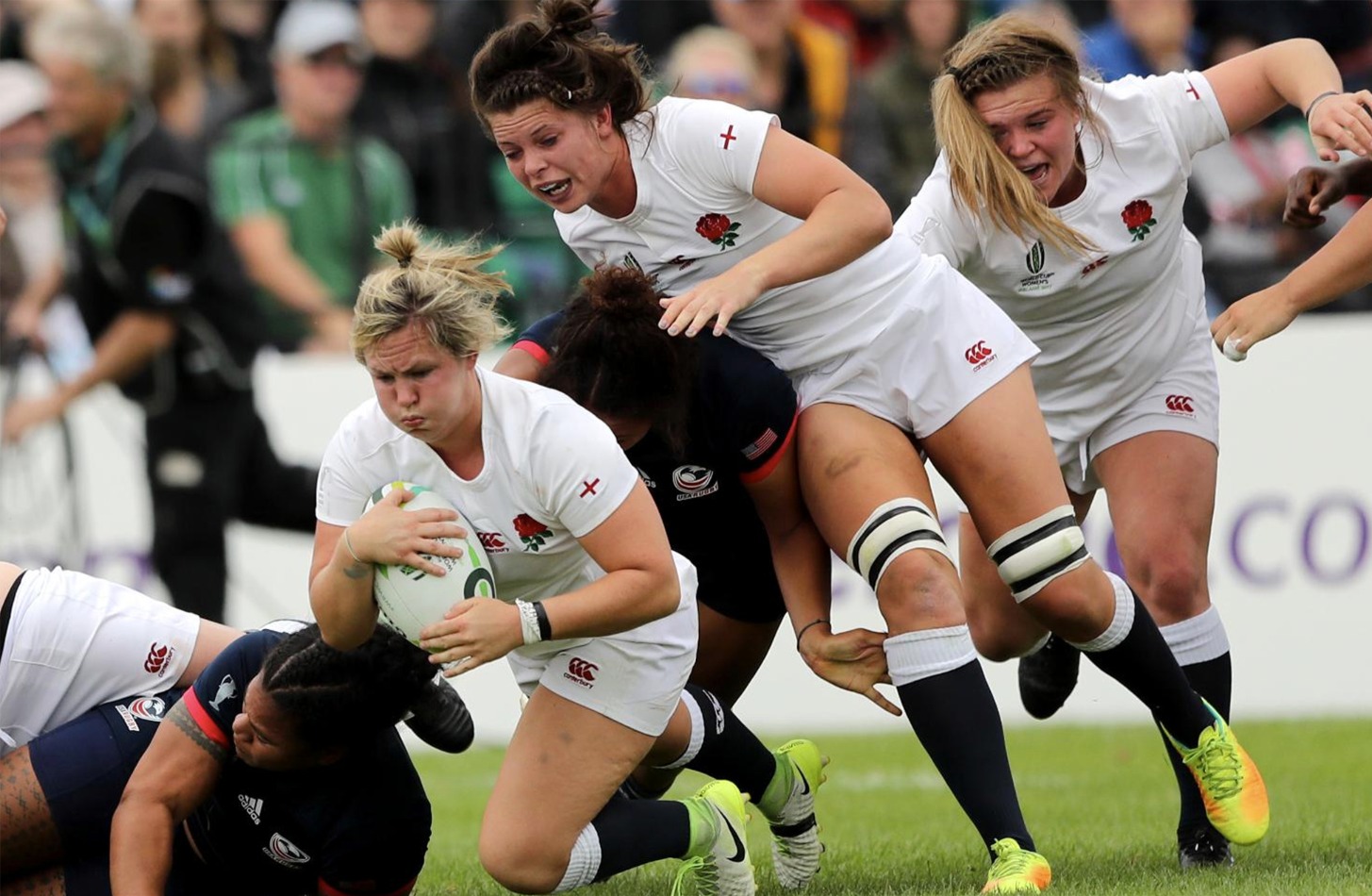
Marlie Packer scoring against the USA. / Photo: INPHO/James Crombie for World Rugby
“England had a really great 10-15 minutes where they put the game away with three tries in the first half,” Steinberg said. “At halftime it was 33-7, but our focus on four tries helped us get beyond that. ‘Stay focused on the goals even though the game is away.’
“To have the team step up – we could have gone in a very different way,” the coach praised. “It’s interesting as a coaching staff because we didn’t know that much about how they’d play together. We didn’t know if they needed to be relaxed or if we needed to challenge them – we were learning as went along. The England game showed a lot of resilience, and that was really great to see because it would help us move through.”
England won 47-26, but the USA scored three second-half tries, and the fourth overall came at the buzzer. The USA accomplished all of their objectives – made the semifinals – and then faced eventual champion New Zealand for the final’s berth.
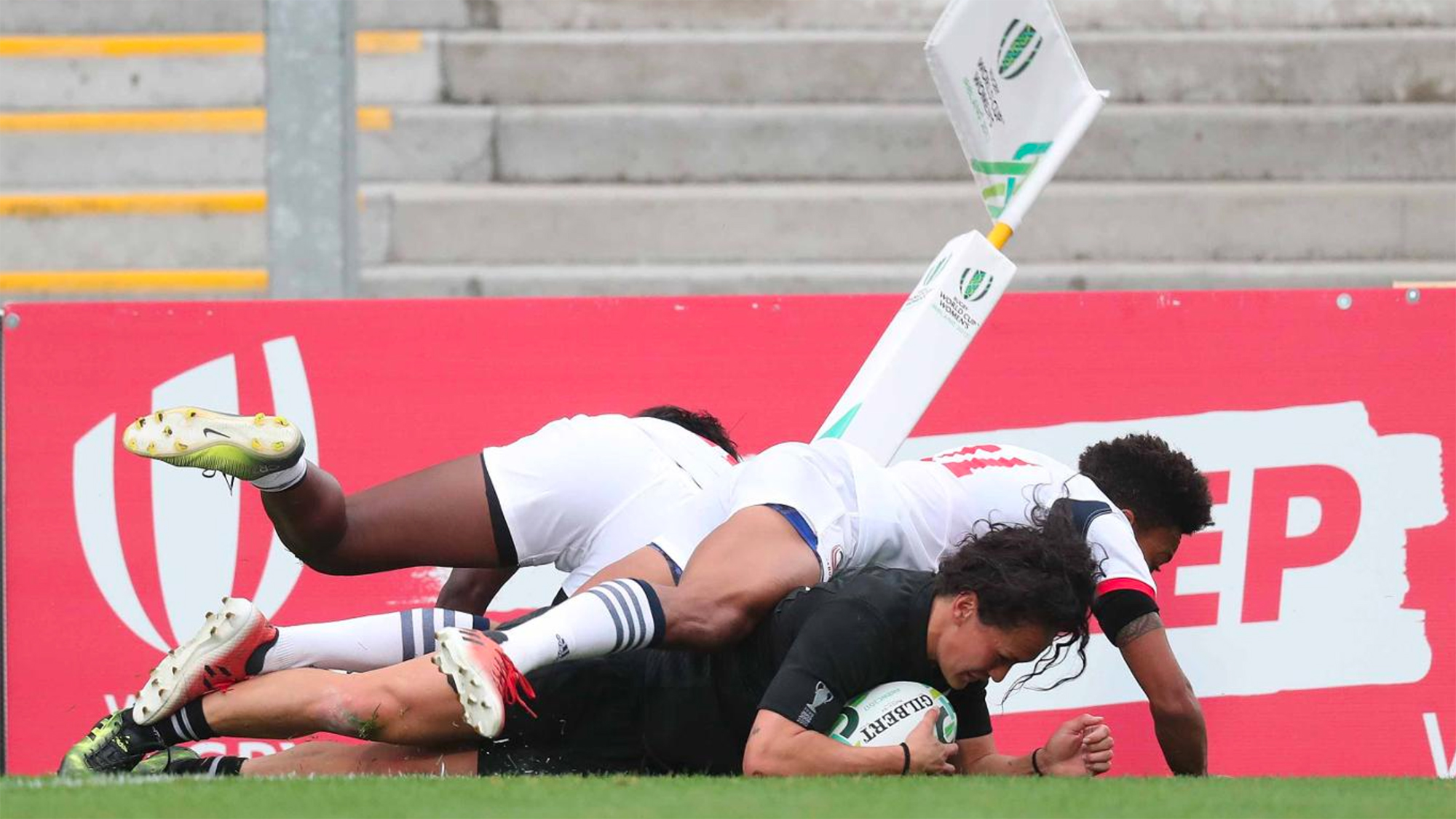
Portia Woodman scored four tries vs. the USA. / Photo: INPHO/Billy Stickland for World Rugby
“We were ready for the physicality and pace of the game, and for about 60 minutes, we were able to play with them,” Steinberg said of the 23-12 scoreline into the fourth quarter. “We were certainly holding on in moments, and we had chances we didn’t take in the first half. If we had taken them, it could have been a different game.
“We got to the point physically and emotionally in that last 20 minutes, where we were drained,” Steinberg said of the 45-12 finish. “One of the gambles was starting the same team through the World Cup, and you began to tell a little [the toll it took] in the New Zealand game. That’s the down side of a short turnaround. But we had a plan to get to the semifinals and then see where we finish.”
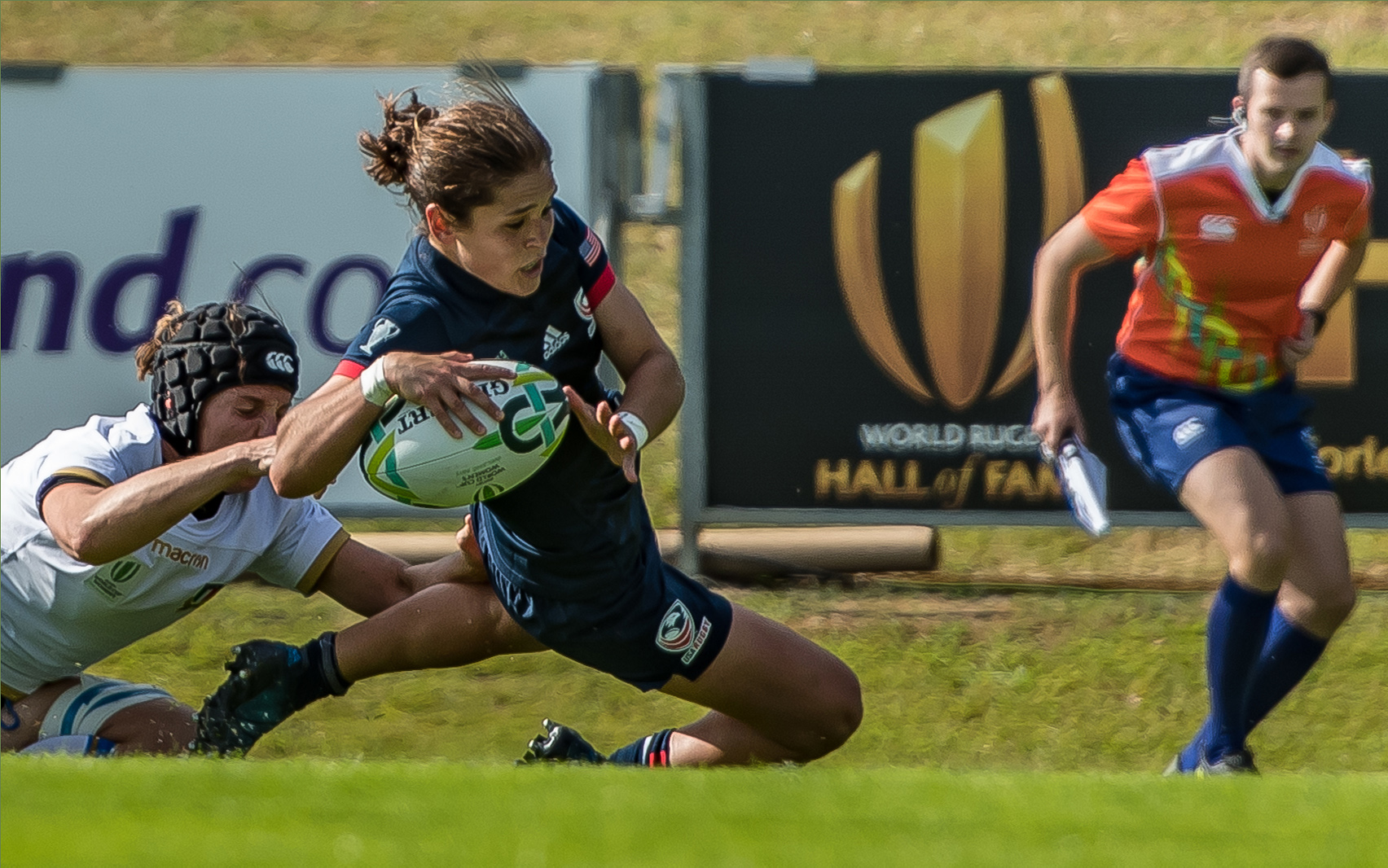
Kimber Rozier scoring against Italy. / Photo: Colleen McCloskey
Another gamble was having one player serve as backup for both halfback positions. Kayla Canett is a natural 10, but with so many No. 9s unavailable, she was being developed behind Deven Owsiany at scrumhalf. Canett played her first game at scrumhalf in the World Cup against England, and that leap of faith gave the USA its fourth try that match. But when Kimber Rozier was unable to play in the third-place match against France, Canett stepped into the 10 jersey with little prep.
The USA finished fourth after a 31-23 loss to France.
“We were disappointed because I really felt we could’ve beaten France,” Steinberg said. “A big challenge was that we weren’t able to make a huge number of adjustments relative to the opposition. France did a good job of taking away our outside runners, but we had opportunities to win where inexperience prevented us in doing so.”
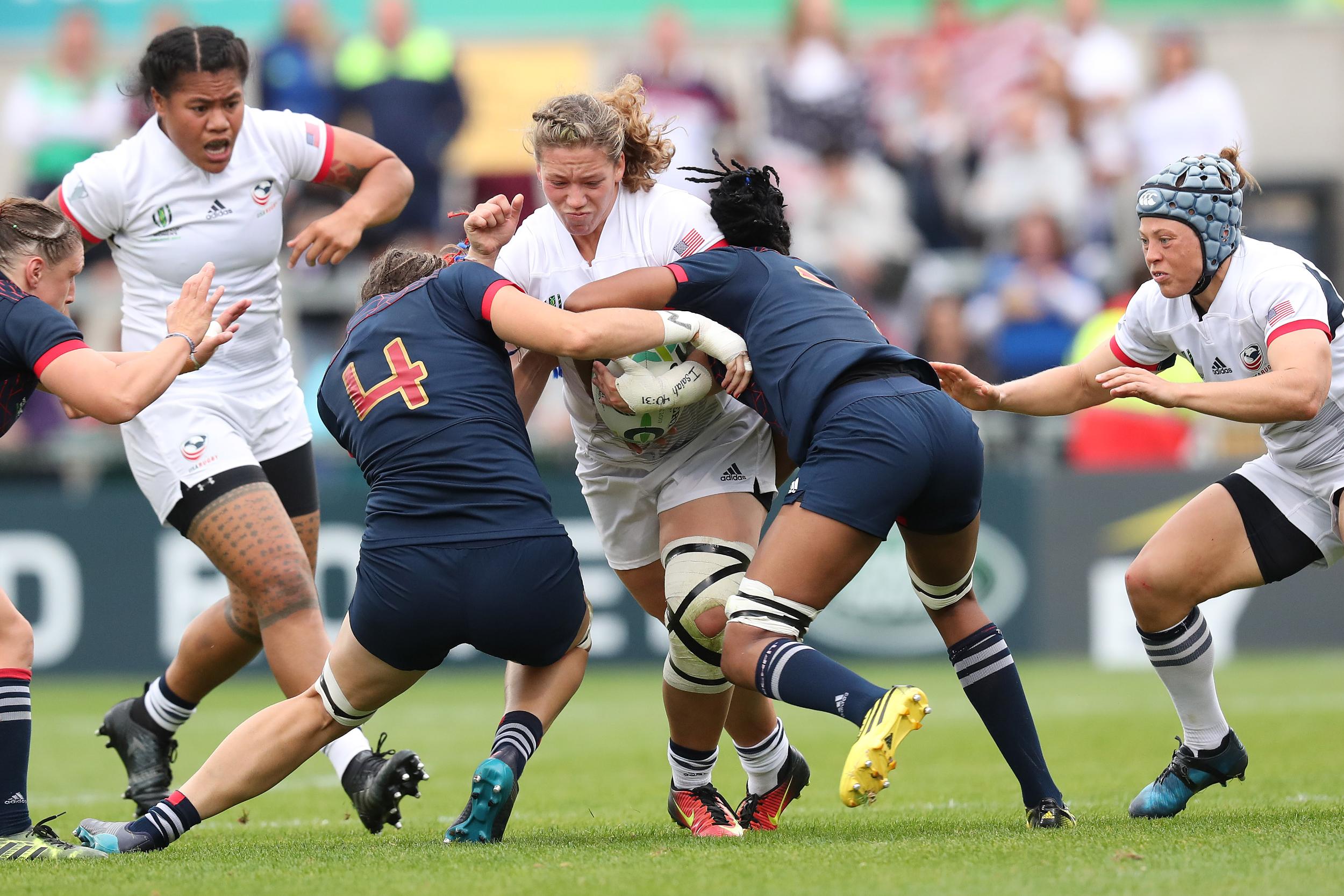
Hope Rogers vs. France / Photo: INPHO/Billy Stickland for World Rugby
“They were disappointed; they’re competitive athletes. There’s a chance to medal in the third-place game, and to come in fourth means you don’t come away with hardware,” Steinberg said. “Our goal was to play our best game in the end, but it was probably our most consistent game. In the last 20 minutes, the bench came on and demonstrated our depth. There was no drop-off and that’s really important. It would have been good to finish third, but it was satisfying.”
Steinberg was effusive in his praise for the players, the majority of which are young and could easily carry over to the next WRWC cycle.
“We competed against the number 1, 2 and 3 teams in [10 days], and the fact that we were still going and competitive with them says a lot about the players and the high-performance staff physically preparing them and managing them throughout the World Cup,” the coach said.
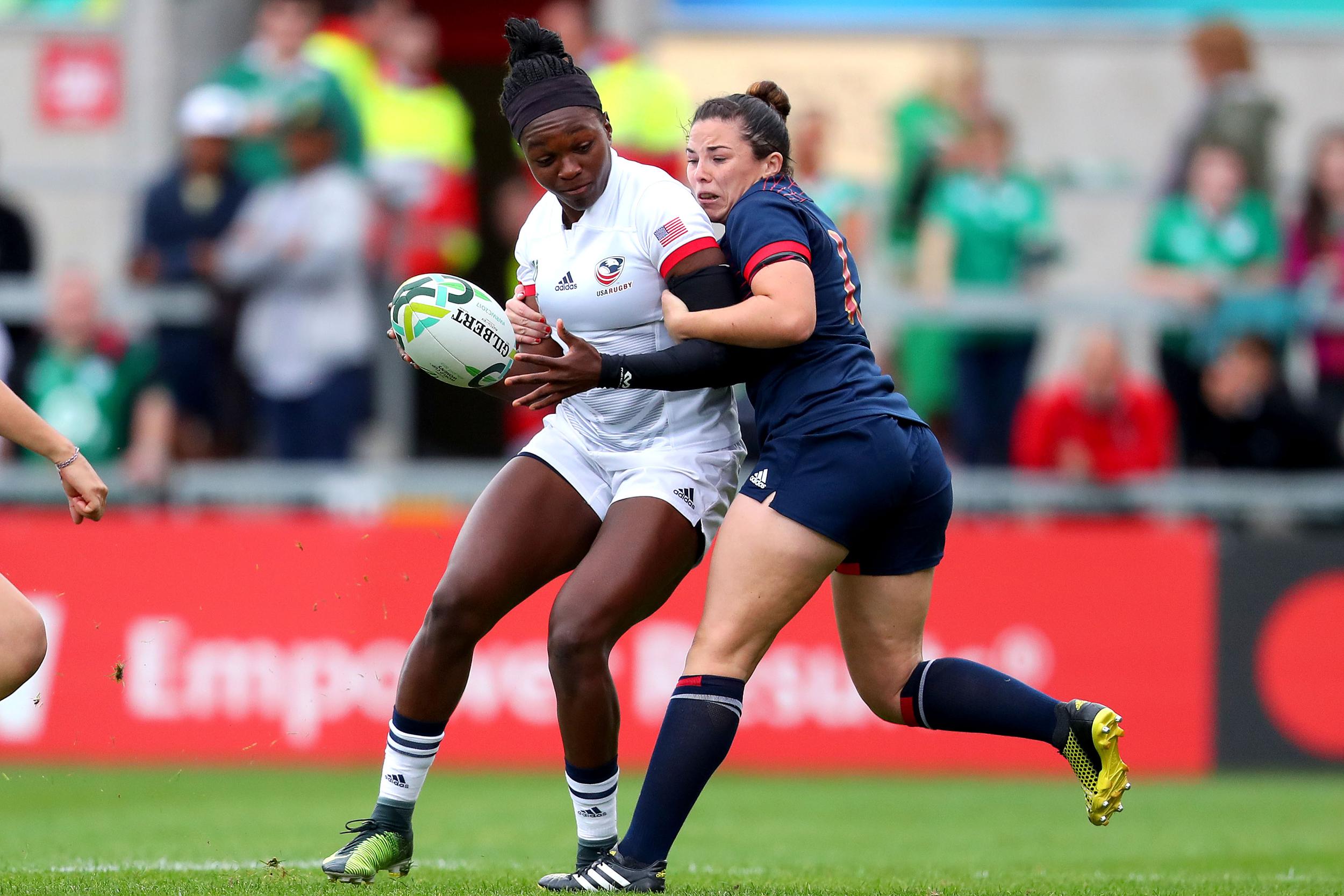
Cheta Emba vs. France / Photo: INPHO/Bryan Keane for World Rugby
Over the course of the WRWC, the USA regained two spots in the World Rugby rankings, got a good understanding of where it stands against the three-best teams in the world, and has a core group of players who can take these experiences and keep momentum for the Eagles.
In the following piece, Steinberg talks about what World Rugby could do to make the WRWC and women’s rugby better. In the third article, those reflections turn inward, to the WNT and its support.


